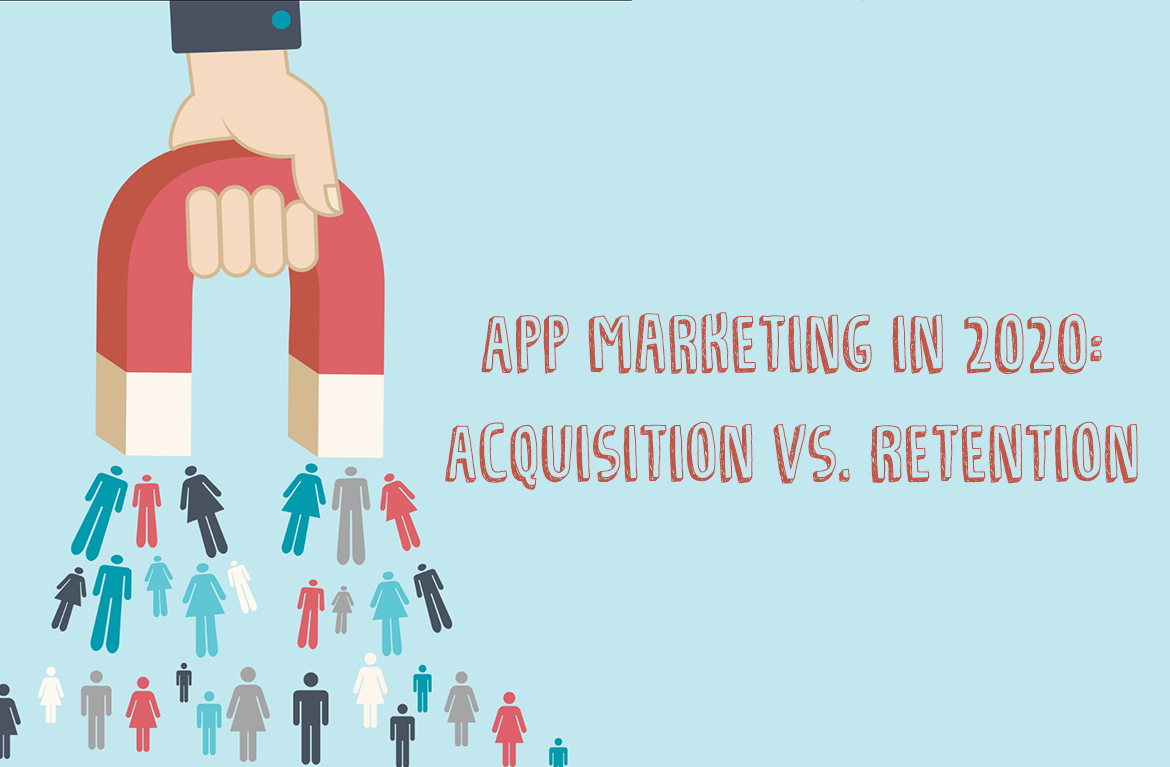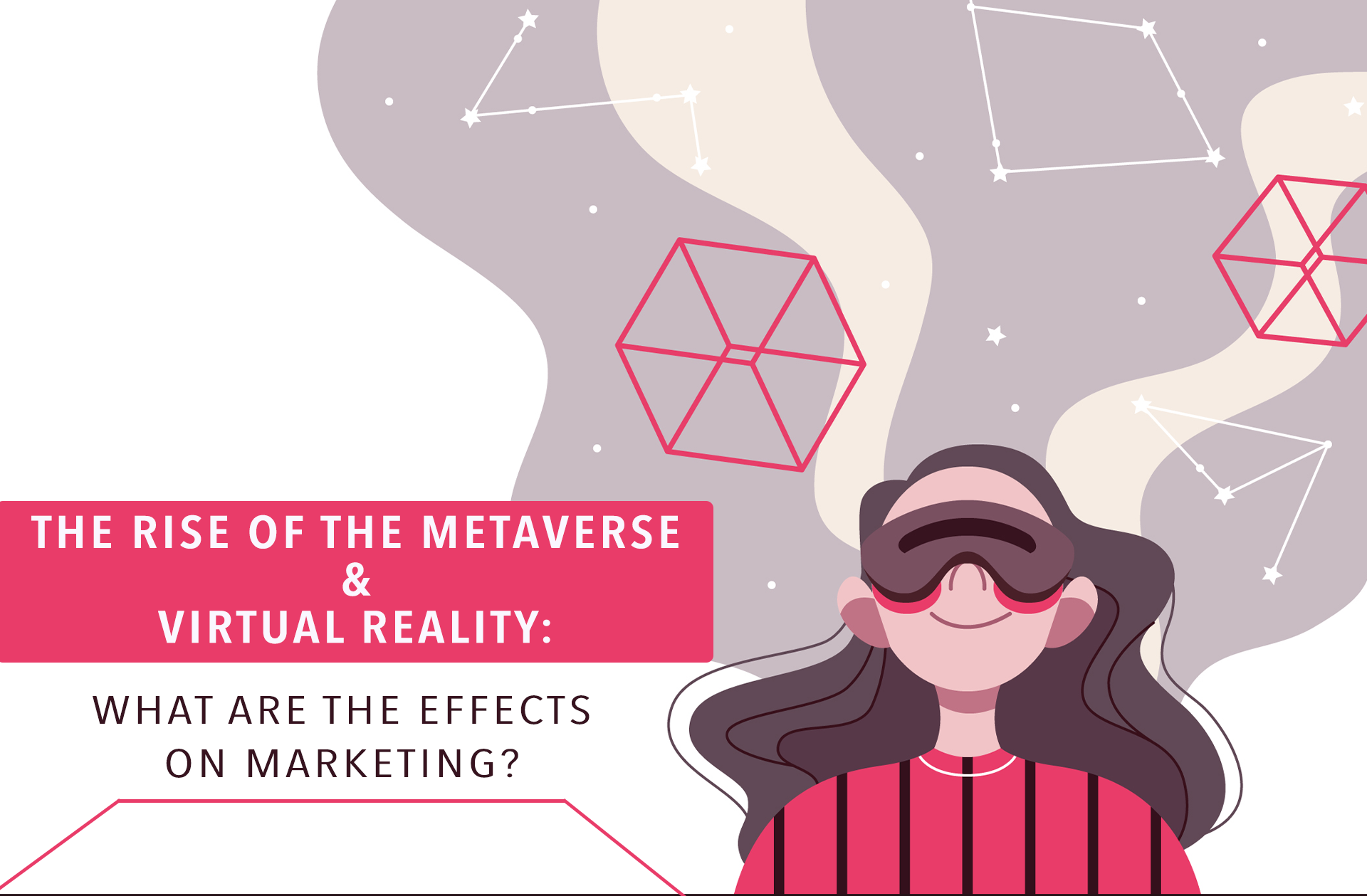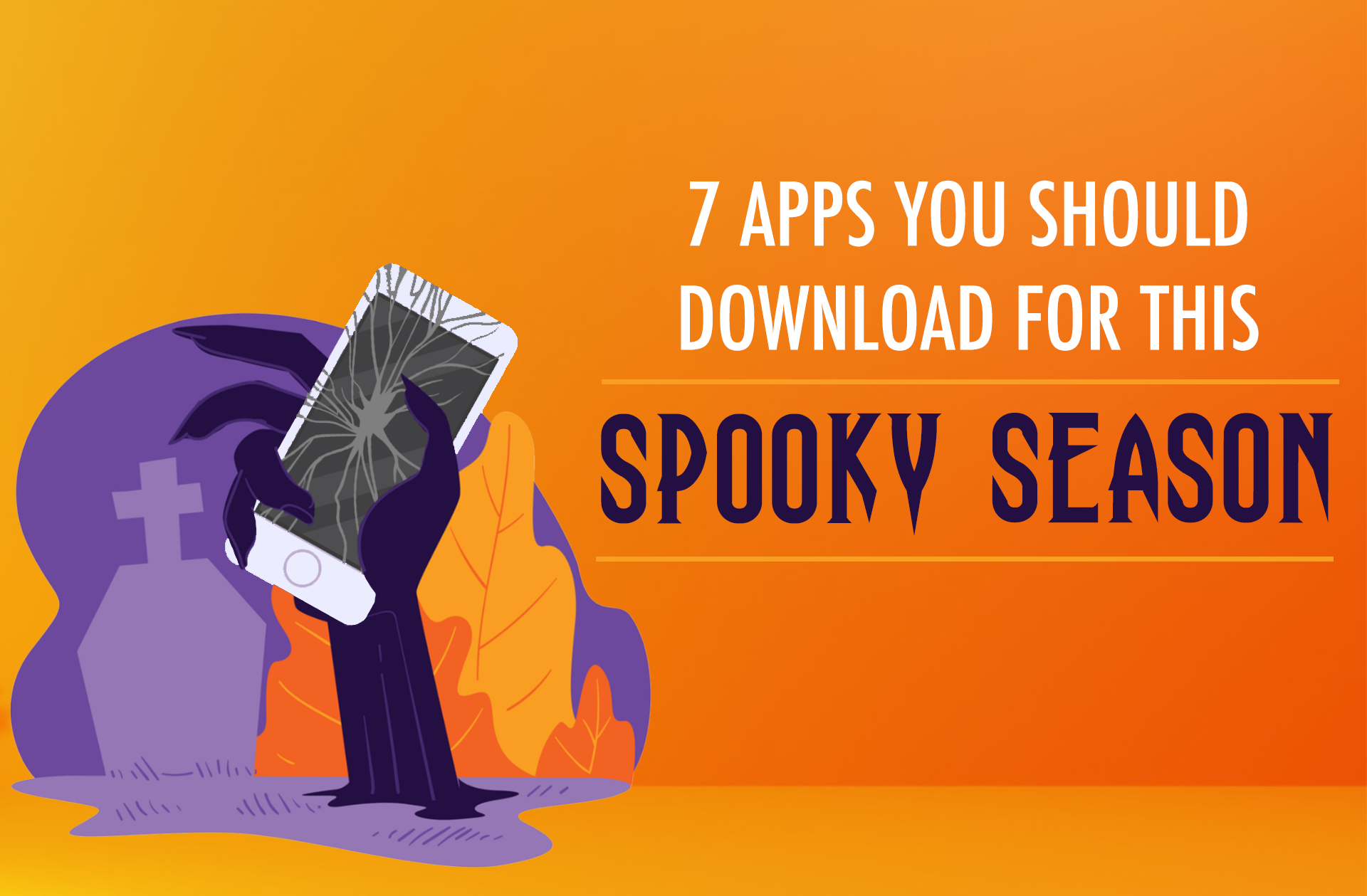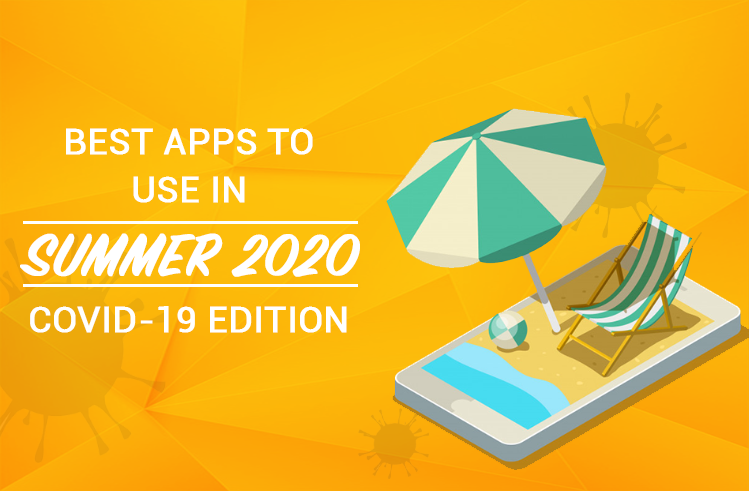Hello fellow app marketers, look! We have made it. It is 2020, not just another year, but a new decade that unfolds. The last 10 years have been remarkable for app marketing, with 2019 setting some precedence to new trends that will emerge. App marketers need to be all the more ready to approach this new decade head first.
Consumers increasingly spending more time on their smartphones and becoming tech-savvy, has fuelled the next few trends to emerge. Namely, peak in mobile advertising, in-app advertising, programmatic marketing, 5G, augmented reality/virtual reality, artificial intelligence, and blockchain.
Yes, new trends will always emerge, year by year, however, the pattern remains the same – new channels develop, competition floods in, channels get saturated and repeat. With app marketers fighting for the same target consumers, it is becoming a struggle to receive attention, let alone, create user engagement. Thus, to stay ahead of this cycle and truly make your place within the lives of your consumers, as marketers, the most crucial factor is strategy – how do you get active users on your application?
To mark the start of this decade, we bring up the most relevant and prevalent question to app marketers, in the face of a rapidly changing industry – what should your strategy be: acquisition or retention?
What is User Acquisition (UA)?
User Acquisition is the process of attracting and converting new consumers for your app. It is not a one-step process, or a predetermined action-course for every user acquired. However, to simplify the definition for this article, let us look at UA as the following:
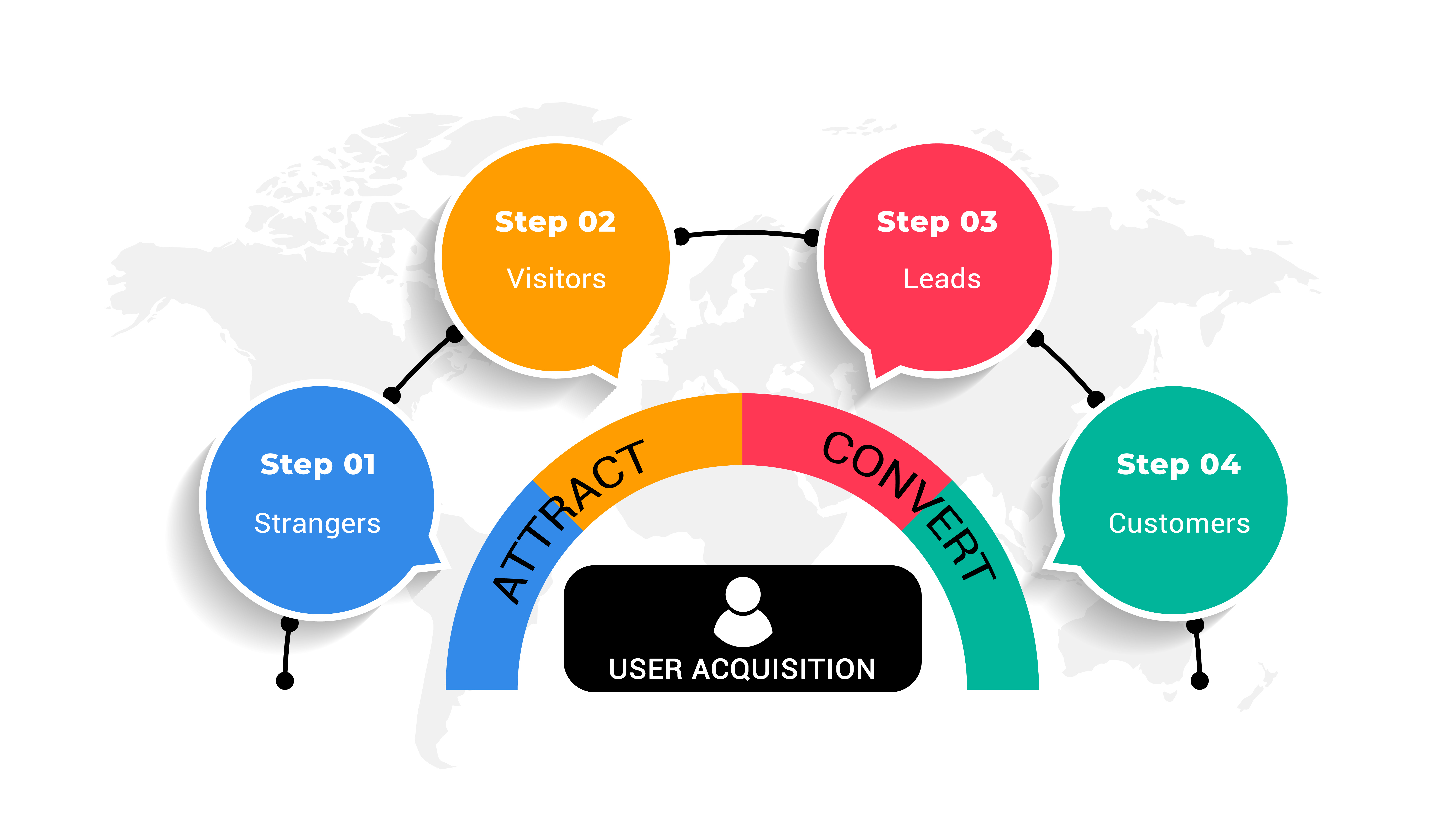
The goal of your User Acquisition strategy can vary depending on what you as a marketer for your app are looking for – installs, registrations/subscriptions, deposits, transactions. Etc. This also depends on the model of your application. What is the end goal? If you have an e-commerce app, the purpose of UA is a purchase. If you have an app that runs on a subscription model, then a user becoming a subscriber is your goal. No matter what the end goal is, UA is the starting point. This is how you can acquire a customer base and grow it eventually.
User Acquisition Strategies in 2020
With hundreds of applications being released every month, it has never been more critical—or more challenging—to attract, engage, and monetize users with effective UA strategies. But the good news is that if you can adapt quickly to the ever-changing landscape of app advertising, you can reap the rewards in the form of more users, who are more engaged and contribute more to your app’s bottom line.
As digital marketers. we need to know this model by heart – PESO
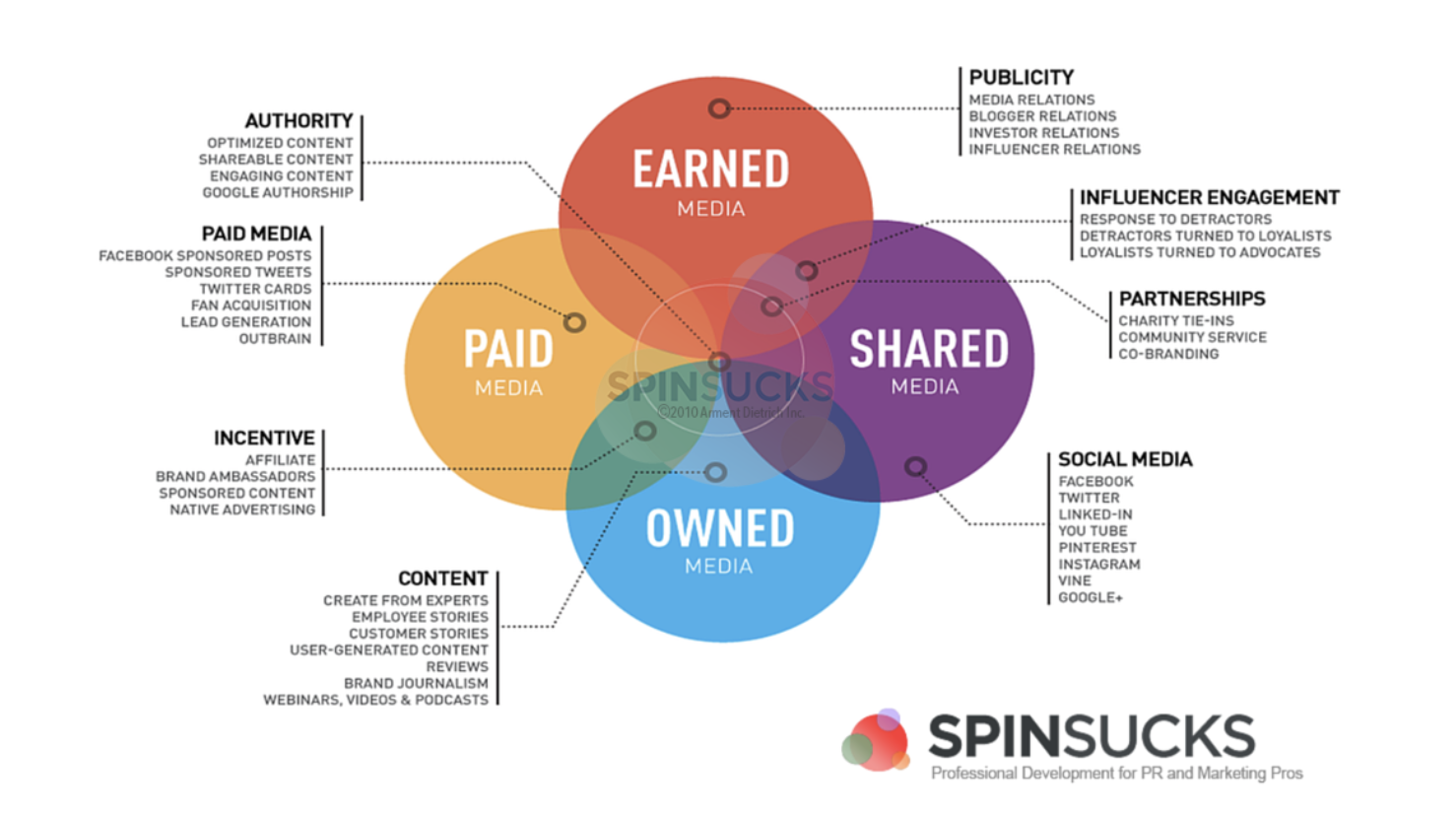
Source: Spinsucks
These are the primary media categories – paid, earned, shared, and owned. I would like to highlight two main types that are on the fast track.
Paid Media – You get what you pay for
In the 21st century, paid media has witnessed some exciting changes. To sum it up, media such as broadcast, print, direct mail, and outdoor advertising – also known as traditional media – has seen a massive slide, as ad spend is being directed increasingly at digital. Moreover, it has been forecasted that $127 billion will be poured into online advertising by 2022, which is 70% more than the forecast for TV advertising.
Excellent benefits such as targeting, control, scalability, and accountability through measurement are a few of the advantages that paid digital media can offer you. Leading this category of media is mobile.

Source: eMarketer
We can clearly see that nearly 34% of all media spend in the US is already going towards mobile advertising, with that share projected to rise to almost 48% in the next three years.
It can be challenging to know where to prioritize media allocation, as each channel has its own costs and benefits. You will be forever challenged to examine and optimize ad spend to increase ROI. Click here for a comprehensive guide on various channels available with their pros and cons.
Owned Media – Low to No-Cost Alternative to Paid Media
Heard of the famous saying – “content is king”? Well, yes! It is unquestionably a key to app sustainability. Content marketing is a channel where you have full control and can reach new audiences and boost traffic. A suitable medium for app content marketing is videos – known for their active engagement and prolonged attention span in viewers. App demos, promotional videos, and user-generated videos can positively attract users and even inspire them to share.
In addition to this, the content generated through blog posts, infographics, ebooks, guides, templates, etc. can project that you can stay ahead of trends and understand users in a way that impresses them. The underlying key to content generation is value. Every piece of content put out there for your users or new audiences, has to provide value.
Now that you have the content, you have to think of ways in which you can deliver it to your intended users. The most relevant and growing channels are social media, email marketing, mobile website, and SMS/notification. All these channels can be optimized and used according to your content strategy – do you want is personalized? Then, use email marketing and/or SMS/notifications. You want to reach as many viewers as possible? Then use social media and/or mobile websites.
Create Synergy

Source: Spinsucks
With these media categories available to you, you can connect with new users across the spectrum of paid, earned, shared, and owned media, by understanding your options and learning how you can integrate them to seek greater control and immediate results. However, as we enter this new decade, we as app marketers face challenges that may hinder our path to growth. I would like to draw attention to some of these challenges and evaluate how we can overcome them.
User Acquisition Challenges in 2020
Increasing UA Costs
This is the most obvious one as the increase in demand leads to a rise in UA. Moreover, acquiring users that will actually transact with you, i.e., in-app purchases, can be even more costly. In the last five years, the cost of acquiring new customers has increased by over 50%. The most common way to overcome this rising cost is to rely heavily on data-driven marketing strategies that allow you to optimize and give you the confidence to invest in marketing and drive profitability.
Fraud
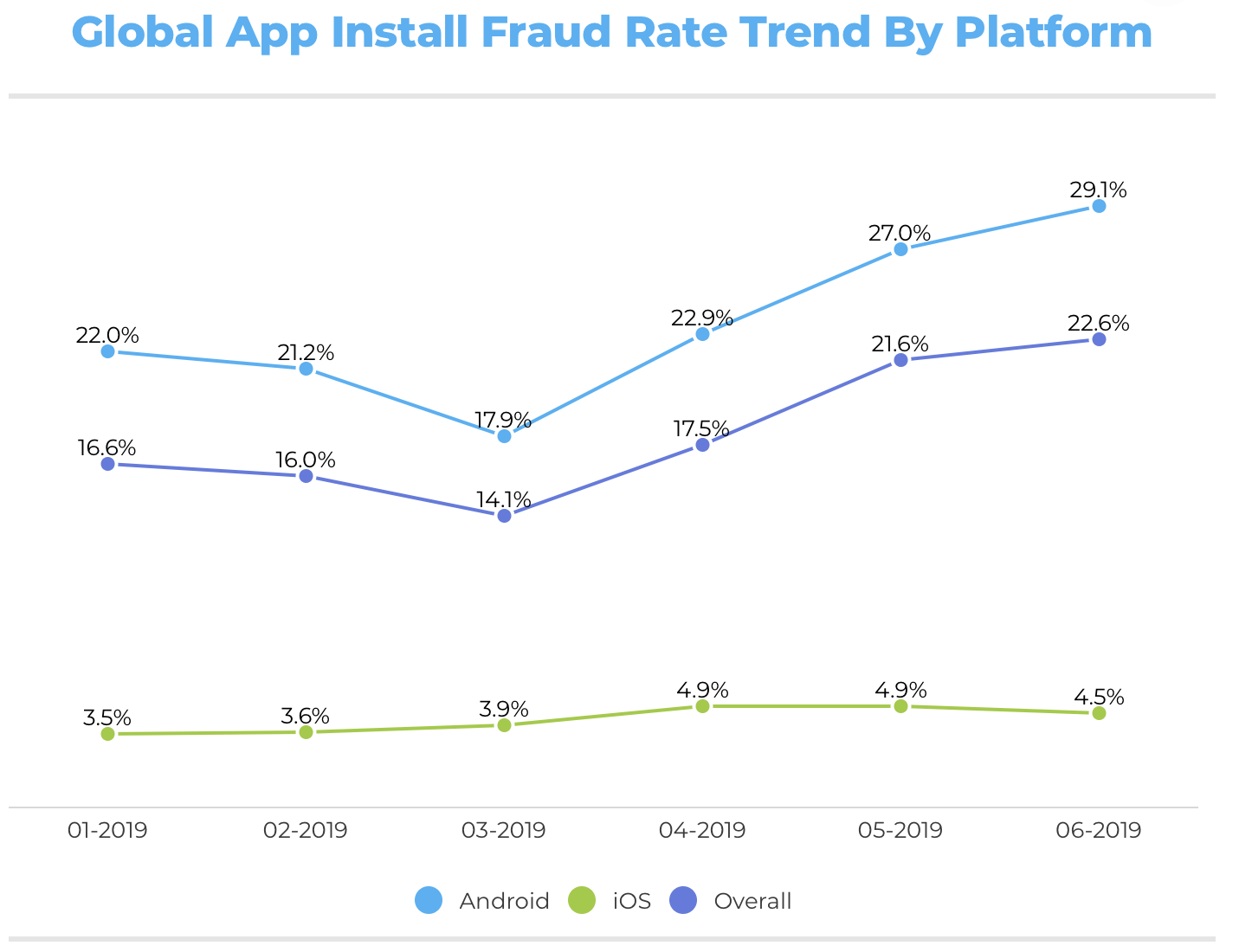
Source: AppsFlyer
With digital on the rise and people becoming more tech-savvy, the dark side of digital is also on the rise. Ad fraud is one of the evils lurking around digital advertising with fraudsters looking for ways to steal marketing spend. App marketers need to be vigilant and recognize ad fraud before it is too later reclaim ad spend they have already handed over to a network or, in a worst-case scenario, fraud goes unnoticed. A preventive measure such as choosing transparent ad networks/agencies/platforms such as minimob, and working with third-party attribution platforms will reduce the damage done or even irradiate completely.
Regulations
With regulations like the EU’s General Data Protection Regulation (GDPR) and California Consumer Privacy Act (CCPA), tracking of data and personalizing ads will become extremely challenging and costly. Even Apple’s Intelligent Tracking Prevention (ITP) will cut back available data and raise prices for premium third-party data and location-based advertising. This will also make segmentation and targeting difficult. App marketers should start to utilize their first-party data and develop data collection methods through the use of AI and machine learning, and other marketing technology, which will prove to be cost-effective in the long run.
Churn Burns
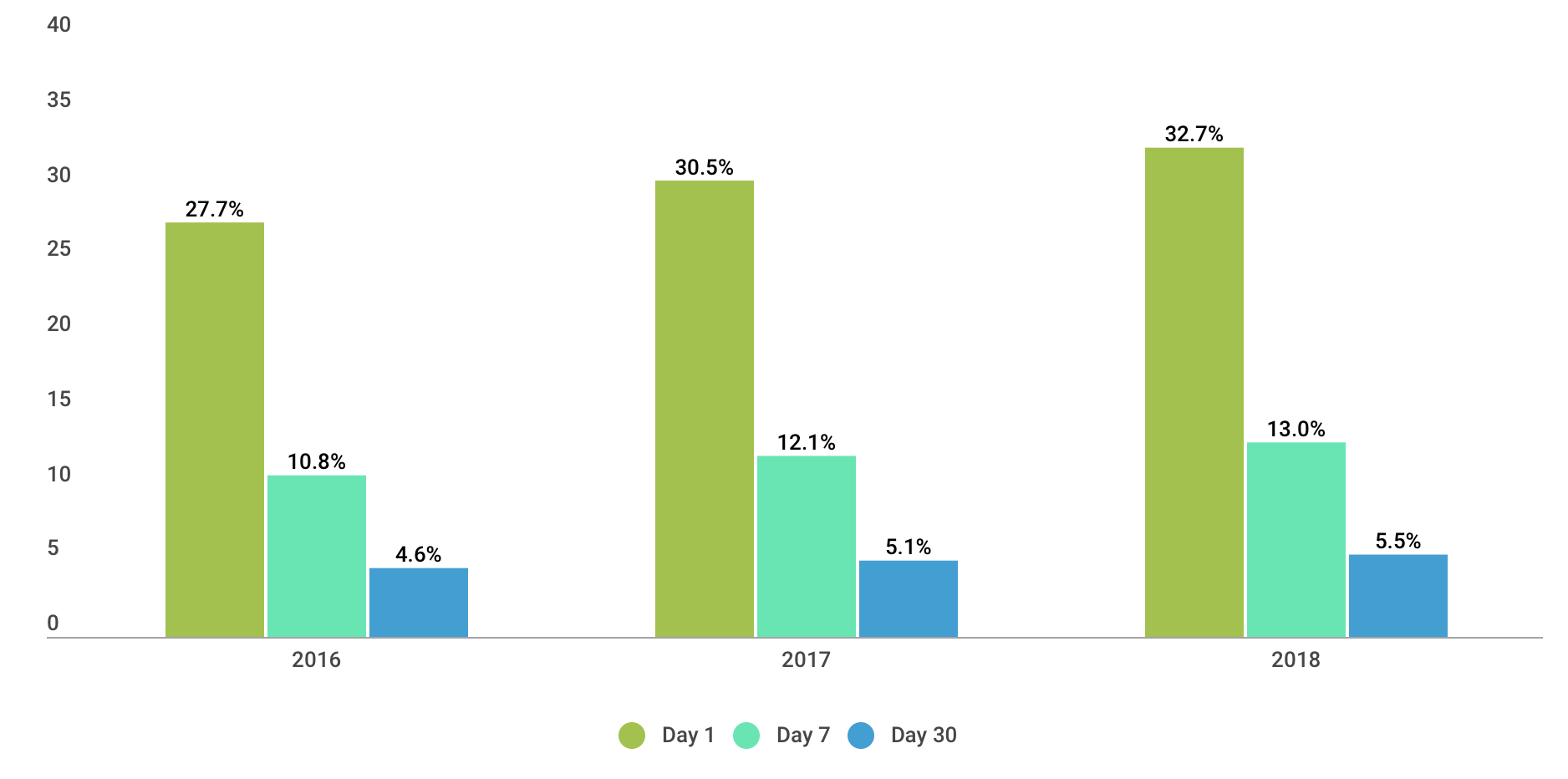
Source: Appsflyer
Users are demanding, finicky, and extremely fickle. This means that they cannot stick to one app. This means churn burns us, marketers, especially when the app monetizes on in-app purchases. The above table shows the retention rates for days 1, 7, and 30. The drop in percentages makes it apparent that churn rates are high, with app marketers losing valuable users they can monetize. The only way that marketers can minimize this phenomenon is to think about ways in which they can retain users using various strategies. This brings me to the next big topic – User Retention (UR).
What is User Retention?
User Retention is self-explanatory – it is the art of keeping your converted users (new customers) as loyal customers who keep using your app and/or transacting with your app. If you own an application that runs on the freemium model, this is very important for monetization. The most crucial metric is retention rates. This figure alone can tell you so much about your app, your strategy, your users, and, ultimately, what you can do to optimize.
A higher retention rate means that your users are utilizing your app to its fullest as users are active for longer, providing for more engagement and offer more significant opportunities for you to monetize. This also allows you to understand why users stop using your app and where you stand in the grander scheme of app performance. This data will help you point to the aspects you can improve.
It is also appropriate to mention that benchmarks for retention rates will be different for depending on your app vertical. For example, if you have a travel app, a user will install it and use it until his travel is complete. Then, he will stop using it until his next journey or even uninstall your app. So a lower retention rate after a quick trip is not unusual. Keeping this in mind, let us look at the key drivers of UR in 2020.
User Retention Strategies in 2020
Easy Onboarding
Providing a seamless onboarding experience can help significantly reduce abandonment rates. The more difficult it is to begin using an app – too many steps to sign up, too many information fields, complex features/functions, etc. – the more likely users are to abandon it.
First impressions are imperative, and user experience is no exception. Apart from ensuring users don’t abandon the app, effective onboarding has been shown to increase user lifetime value by up to 500%. The following steps can help you create an intuitive, frictionless app onboarding process.
- Make logins and account creation easy (reduce steps for a signup, offer multiple registration options, etc.).
- Don’t overload users with information from the get-go. Instead, offer feature/functionality education as the user gets to those features
- Teach through action to expose gestures/movements needed in the app experience
Here is an example that simplifies Onboarding for users of Hootsuite.

Source: Helen Park, Hootsuite
Push Notifications (The Right Way)
Push notifications have been shown to increase user retention, with statistics showing anywhere from 56% to a 180% improvement. Users who have opted in to receiving push notifications exhibit 88% higher app engagement than those who haven’t.
Push messaging serves particular and essential functions. For one, it helps remind users that they’ve downloaded your app, which is necessary when you’re competing for valuable real estate on a user’s device. Implemented effectively, it can also help encourage usage through targeting messages based on behavioral data and preferences. For applications that serve particular functions and aren’t likely to drive daily usage, it can help engage users by providing them a compelling reason to return (for example, a discount or promotion on a service/product).
Include Elements of Mobile Personalization

Source: Sailthru
Mobile personalization is arguably one of the most important aspects of a compelling application. Personalization helps provide a more unique, relevant experience to the user. The more aligned the experience is with a user’s needs and preferences, the more likely they are to continue to use the application.
Apps no longer deliver consistent experiences. Whenever possible, personalize the user experience by using known data to display relevant content and material in the app. Customized content and tailored insights deliver real value to the user.
Including the user’s name on screens and in messaging is an easy way to personalize. Still, diving deeper to ensure push notifications are hyper-relevant to the particular user is where personalization truly thrives. In fact, tailoring push notifications to user interests have a 54% conversion rate, versus 15% from broadcast messages. Users are asking for greater personalization, so you must meet their demands by tailoring their interactions to their preferences, location, and individual behaviors.
But you need to tread carefully; if you implement push notifications improperly and send users irrelevant messaging or notifications that users deem annoying, they will have the opposite effect.
Offers and Incentivization Programs
To drive engagement and retention, you need to give users an incentive to use your app. Mobile-specific rewards, specialized content access, coupons, special promotions, and other offers will help drive conversions and encourage engagement.
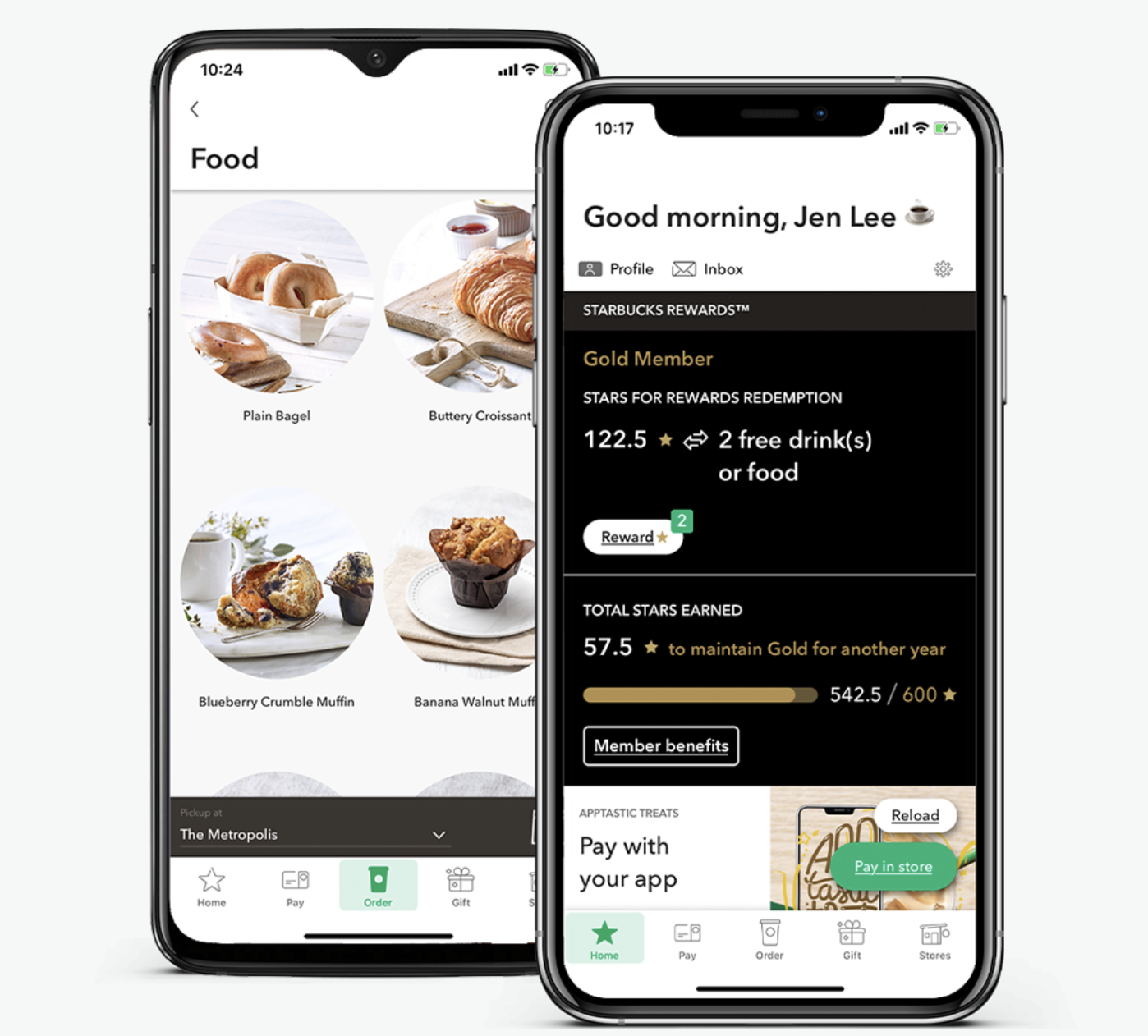
Source: Starbucks
Obviously, the ways you can incentivize users will depend on the nature of the app. For example, apps that use in-app purchasing as a monetization model will benefit from time-sensitive discounts, whereas freemium apps can incentivize users by providing usage-based rewards.
Two-Way Communication
Asking your users for feedback will show that their input is being considered to drive the app in the direction they want it to go. The added benefit of opening these lines of communication with your users is that they won’t be as likely to post a negative review on the app stores if they can tell you first. Showing responsiveness and addressing any questions or concerns will boost your engagement and retention rates, encourage positive reviews, and build long-term brand loyalty.
So, What Should Your Strategy Be: Acquisition or Retention?
Now that we visited Ua and UR in-depth, the question remains – acquisition or retention?
The thing about this question is that it is always going to be a combination and ever-changing. It depends on multiple factors such as Customer Lifetime Value (CLV), Stage of App Life Cycle, and Model of Your App.
What is Customer Lifetime Value and Why Does It Matter?
When we talk about CLV, what we are referring to is a prediction of the total profit generated by a customer over a projected period. Calculating this number helps marketers see the long-term vision, in terms of how valuable a customer is. So how does this tie in with UA and UR? Well, with information such as Cost of Customer Acquisition (CoCA) and Cost of Customer Retention (CoCR), we can decide where resources should be allocated. It is all about lower costs and increasing CLV. If you see that the cost of retaining a particular user who has already transacted with you app is more valuable than acquiring a new one, then UR is more sensible. But this does not mean that you give up on UA altogether. It is about finding the right proportion that maximizes returns. Yes, as horrendous as it sounds, it is a mathematical model of optimization. This brings us to the next factor that influences proportions – App Life Cycle.
Where in the App Life Cycle are You?

Source: Careerpoint Solutions
This is a critical factor to consider when deciding where to allocate your resources. It is evident that when an application is launched, it is all about UA, nut as the app gains traction and a more significant customer base, UR becomes an integral part of the strategy. But it does not stop once an app is well established. In today’s app world, apps can die out. There is a decline stage, very much like the Product Lifecycle Curve which is well known to marketers –

Thus, there is something called a product extension. This is the perspective of an application can mean sourcing for a new consumer base through UA strategies, or even revamping the application to target new audiences. It can also mean rolling out new loyalty programs to stop users from abandoning your app. Thus, the stage of your application in its lifecycle is key to understanding where you need to focus your efforts on.
Model of The Application
There are numerous revenue models applications can use. The popular ones are freemium, subscription, paid apps, and e-commerce. Each of these models has its own focuses. For instance, an application run on the freemium model relies on in-app purchases or advertising to monetize. This requires the users to spend spume time in the app and even come back to use it. Thus UR is going to be the crux of their strategy with UA backing it. However, if the app runs on a subscription model, it requires its user to subscribe once based on monthly subscriptions or even annually. This requires massive UA strategies with UR backing it so that users do not unsubscribe.
The Common Factor in the Equation
In this equation of UA and UR, the common factor is that both the strategies are present. However, their proportions are what will drive app marketing. In 2020, with users becoming tech-savvy, new technologies emerging, increasing regulation protecting users, and millions of apps being introduced into the market, it is a fact that it is going to be challenging. However, it is all about harnessing the opportunities 2020 present you with and being a prudent marketer who is aware of all the shortcomings of the industry.
The mantra of app marketing should be to always work to bring new customers on-board but don’t forget about them once they’ve joined the crew. With this, I leave you to think about your app marketing strategy and evaluate in what ways you can optimize it. What are you waiting for? Go seize this new decade!
Author: Maria Dimitropoulou | Founder of triggeryourtrip.
